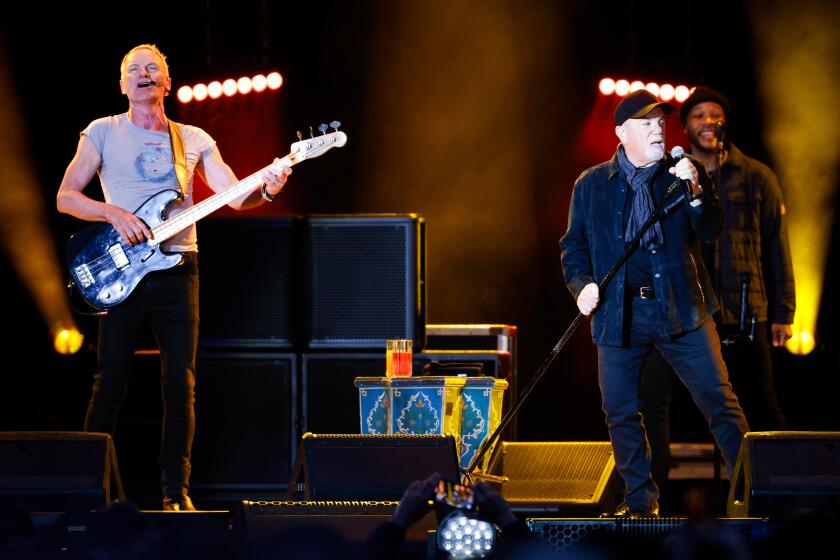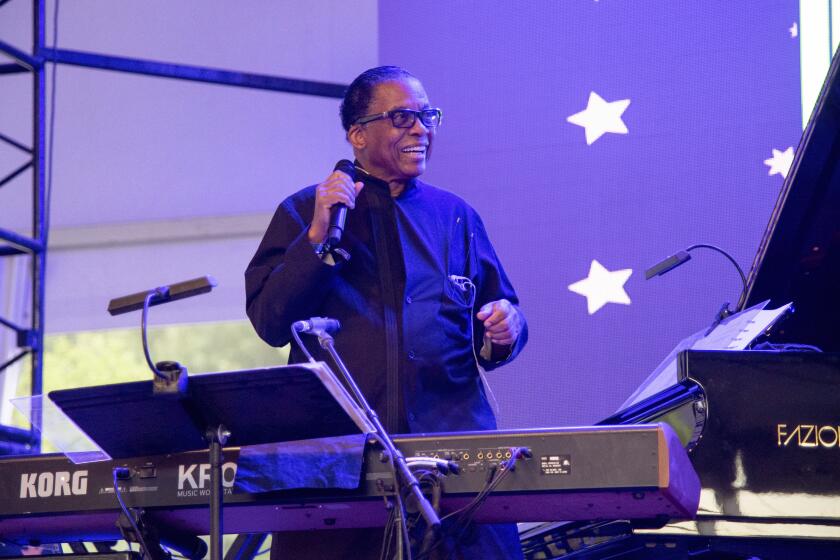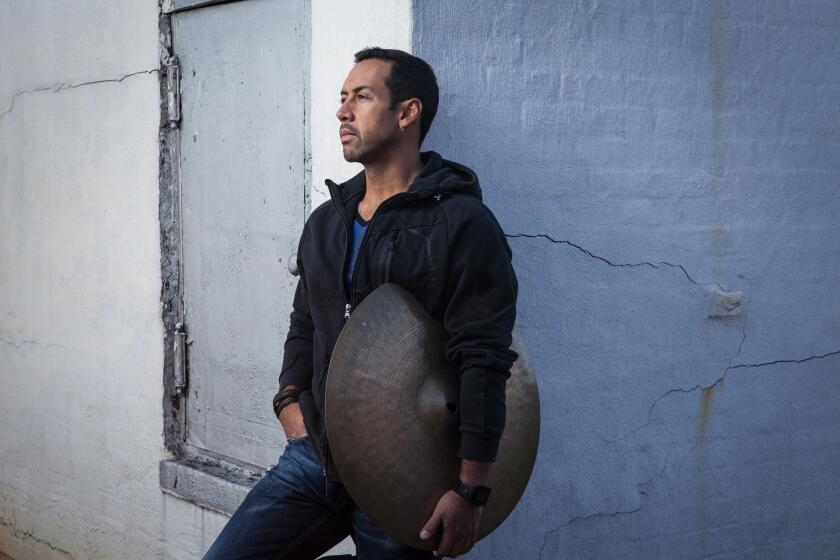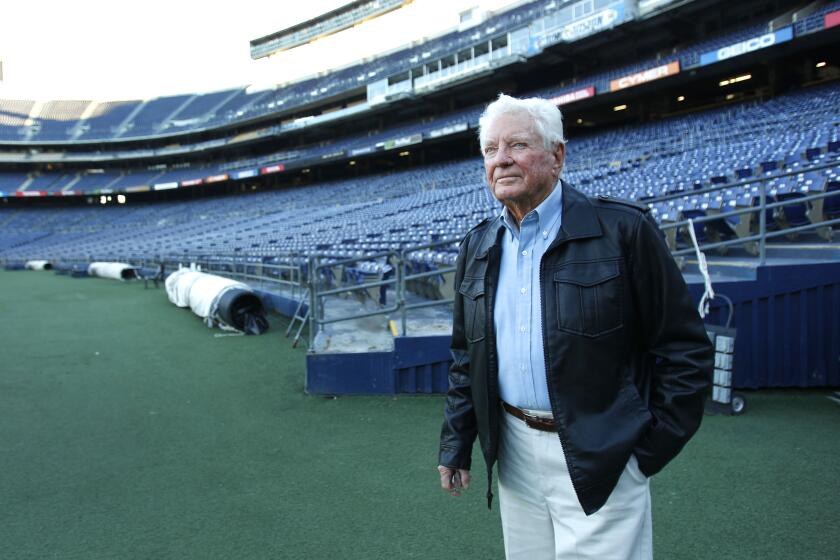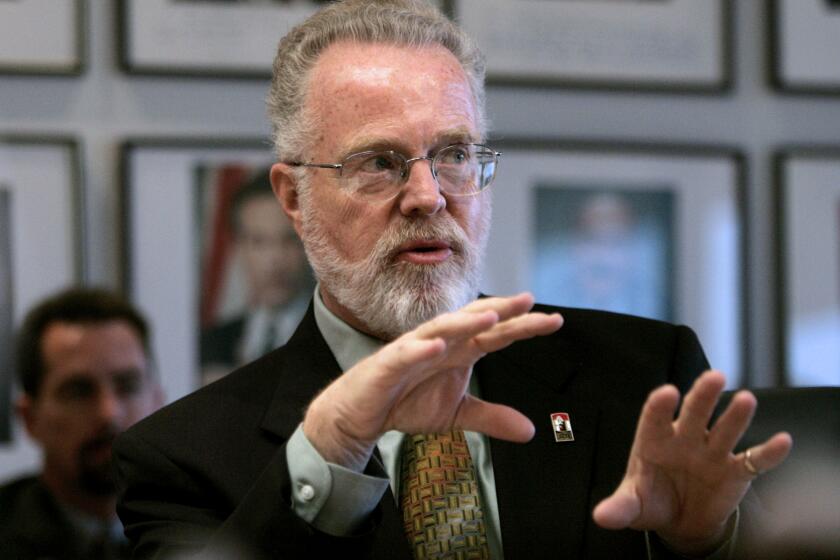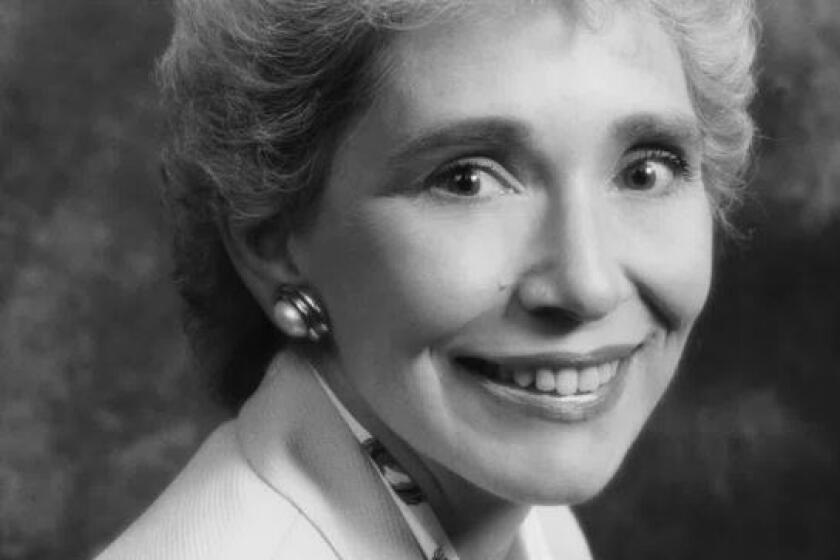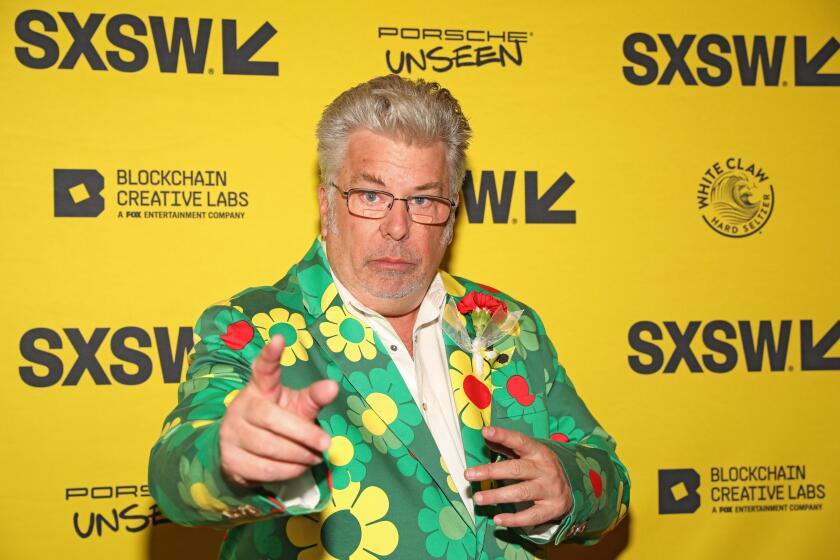Sammy Nestico, ‘the Rolls Royce of composers and arrangers’ in big-band jazz, dies at 96
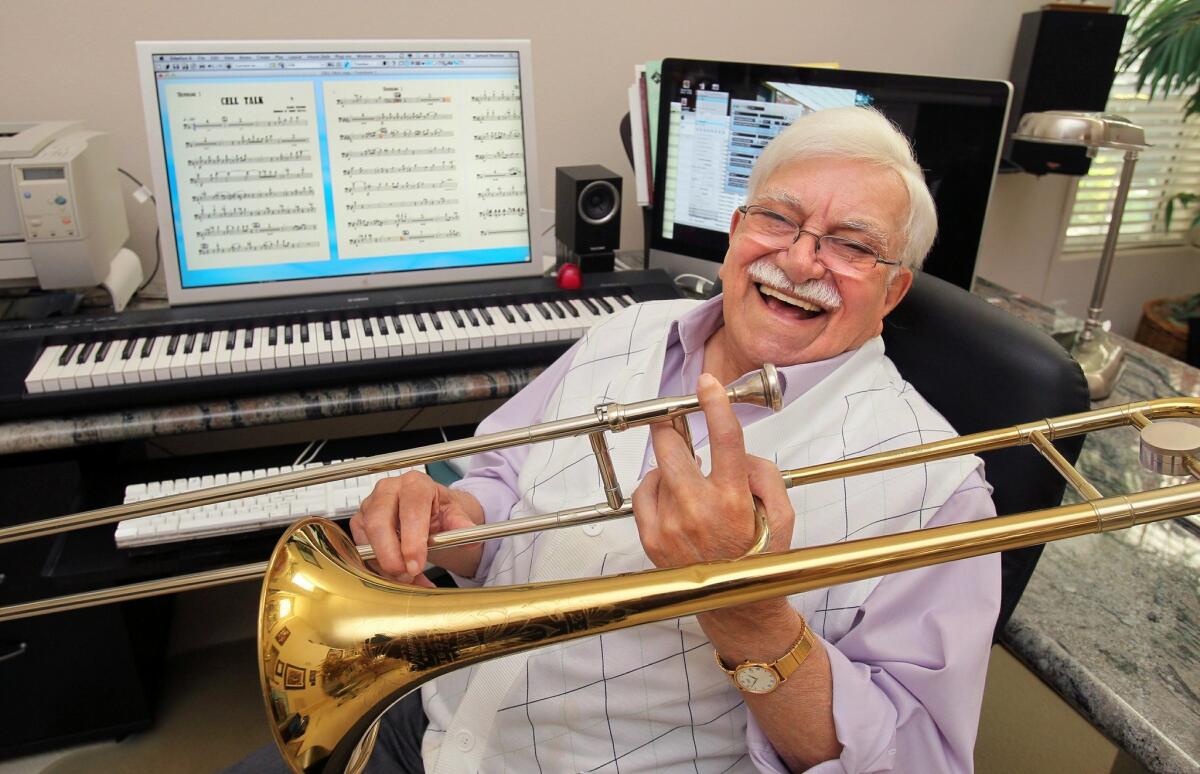
A longtime Carlsbad resident, Nestico completed his final album — a Billie Holiday tribute with singer Mandy Barnett — in late 2019. It is due out in May
Making timeless music was a lifelong calling throughout the eight-decade career of acclaimed composer and arranger Sammy Nestico. His music elevated albums by artists as varied as the Count Basie Orchestra, Michael Bublé, Barbra Streisand, Phil Collins, Frank Sinatra, Buddy Rich and Bing Crosby, and also contributed to the scores for “The Color Purple,” “The Mary Tyler Moore Show,” “Heaven Can Wait,” “Hawaii Five-O” and dozens of other films and TV shows.
A longtime Carlsbad resident, Nestico remained musically active until shortly before he began receiving hospice care in October at his home. The nine-time Grammy Award-nominee passed away in his sleep there Sunday morning.
He died of natural causes, according to his second wife, Shirley Nestico. He was 96.
“Sammy was always a happy and humble man,” Shirley Nestico said. “My children couldn’t believe that someone who was so famous was so down-to-earth.”
Nestico had congestive heart issues, according to Shirley Nestico and Los Angeles filmmaker Diane Estelle Vicarri, who has spent the past 20 years working on a nearly completed documentary, “SHADOW MAN: The Sammy Nestico Story.”
His final album is due out in May. Titled “Every Star Above,” it’s a Billie Holiday tribute album Nestico made in late 2019 with veteran country-music singer Mandy Barnett as a reimagining of Holiday’s 1958 album, “Lady in Satin.”
“I’m grateful to have worked with one of the greatest arrangers of all times, maybe the last of the greatest,” Barnett said Tuesday from her Nashville home.
“Sammy was not able to attend the recording sessions for ‘Every Star Above’ in person. But he watched and listened online, in real time, and the orchestra gave him a standing ovation. Sammy was so happy, he cried. Every player in that orchestra was thrilled and so excited to be playing Sammy’s charts. I think they would have paid to be there.”
Despite their 80-year age difference, celebrated musical arranger and composer Sammy Nestico, 93, and boy-wonder piano marvel Joey Alexander, 13, have several key things in common.
Such fond reactions from his fellow musicians were nothing new for Nestico, who was as self-effacing offstage as he was commanding when leading a band at a concert or recording date. The more than 600 arrangements and compositions he crafted during his career have been embraced far and wide for more than half a century. They include such classics as “A Warm Breeze,” “Freckle Face,” “The Queen Bee” and “88 Basie Street.”
“You go anywhere in the world and Sammy’s music is a dominant factor in all big-band playing — Sammy is the Rolls Royce of arrangers and composers,” said San Diego State University Director of Jazz Studies Bill Yeager, who performed on several of Nestico’s albums.
“He was a master and a giant — and one of the most humble people you could ever hope to meet. When I ran into him last year at the Fish Market in Del Mar, he was gracious, funny and still sharp as a tack.”
Those qualities should be underscored in “SHADOW MAN: The Sammy Nestico Story.” The film by Vicarri includes extensive interviews with its self-effacing subject and with such admiring Nestico collaborators as Quincy Jones, Gordon Goodwin and Toni Tennille.
“I’m still hoping to get interviews with other artists who worked with Sammy, including Phil Collins, John Williams and Michael Bublé,” said Vicarri, who acknowledged it took years for her to convince Nestico he was a worthy film subject for her labor-of-love documentary.
“Sammy didn’t want me to make a documentary about him because he never thought he was important enough. He kept telling me to ‘go find someone famous’ and that I would waste my time on him because he was ‘just an arranger.’ I went along to film his performances and recording sessions with big bands in Europe and Japan. He just didn’t seem to realize how broad and deep a global impact he made with his music.”
Shirley Nestico, his wife of 26 years, agreed, adding: “I have wonderful, wonderful memories of the travels we did to Germany and Japan, and the albums he made there. I never dreamed I could go to so many places and see what I saw with Sammy. Just being in his life was such an honor for me.”
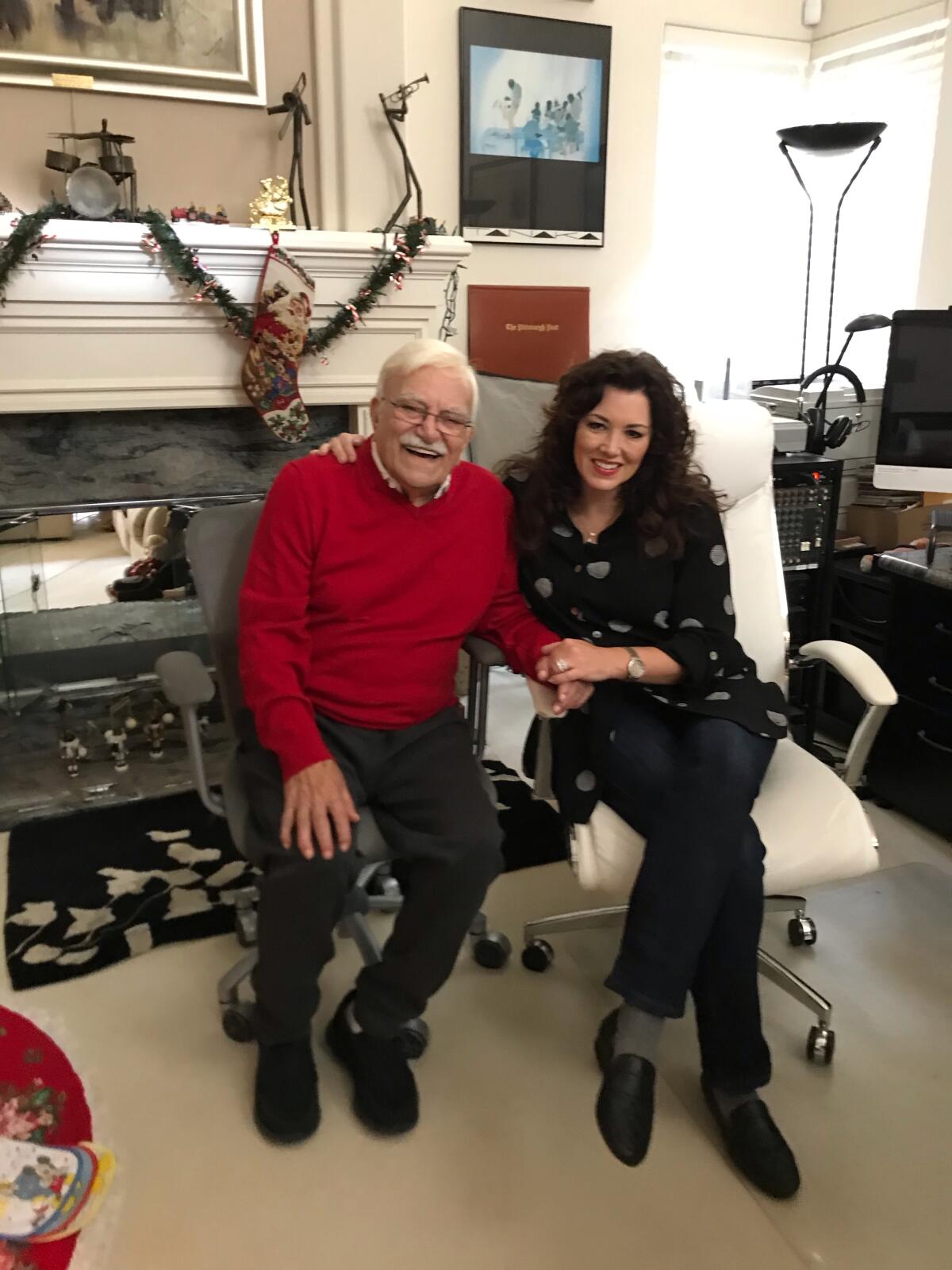
Have trombone, will travel
An abiding love for music started early for Samuel Louis Nistico, who was born Feb. 6, 1924, in Pittsburgh and later changed his name to Nestico. He was just 13 when he began playing trombone in his high school orchestra. At 17, he became a member of the ABC radio orchestra in Pittsburgh, and — after a five-year stint in the U.S. Army during World War II — earned a degree in music from Duquesne University.
An accomplished trombonist, Nestico played in the big bands led by Woody Herman, Gene Krupa, Charlie Barnet and Tommy Dorsey, whose group also served as the launching pad for the young Sinatra.
After re-enlisting in the military, Nestico distinguished himself as an arranger for the U.S. Air Force’s esteemed Airmen of Note band in the 1950s. The Air Force still gives an annual award, The Sammy Nestico Arranging Award, in his honor.
After subsequently enlisting in the U.S. Marines, in May 1963 he became the arranger and leader of the U.S. Marine Band at the White House, serving Presidents Kennedy and Johnson. Nestico remained silent when Johnson — whose tastes did not extend much beyond “Hello, Dolly!” — reacted to one of Nestico’s compositions by demanding: “You call this music?”
Recalling the incident in a 2009 Union-Tribune interview, Nestico said: “I didn’t answer, although I didn’t think (Johnson’s) concept of music was worth a damn.”
Happily, Nestico’s work earned an unreservedly enthusiastic response from jazz giant Count Basie, with whom he joined forces later in the 1960s. They made 10 albums together, four of which earned Grammys.
“He was a big teddy bear,” Nestico said of Basie in a 2014 Union-Tribune interview. “Everyone who worked with him loved him. And being with him was a great stepping stone to get my name exposed.”
Indeed, much of the music Nestico arranged and composed for Basie continues to be performed to this day, including by Yeager’s music students at San Diego State University.
“I’ve been teaching at State since 1985 and I would say almost every semester we would go through a few Nestico charts,” Yeager said. “His writing is the essence of what big-band music — especially the concept of swing is all about.”
Rich in melodic invention and harmonic ingenuity, Nestico’s music was impeccably crafted. A master of counterpoint and syncopation, he could make the most intricate music sound inviting, while imbuing straight-ahead songs with subtle hues and timbres.
“One thing about Sammy’s scores is the specificity of how he wrote the voicings of the chords,” Yeager noted.
“He would add all the alterations and be very specific about what he wanted, especially with the chord voicings. He had a special gift. He was so melodious in all of his lines and there is such a logic to how he connected phrases. His harmonies were so certain and his melodies so logical. Sammy was probably the greatest big band arranger in history. He was a delight and so easy to work with.”
The biggest undertaking of Nestico’s career began in the late 1960s. It was then that he and fellow composing and arranging great Billy May spent five years transcribing, arranging and re-recording 630 songs from 78 RPM mono recordings that had originally been made during the swing era of the 1930s and 1940s. Their meticulously reconstructed stereo versions of those 630 songs were recorded at Capitol Records’ famed Studio A in Hollywood and were released — on 63 albums — by Time Life.
Nestico went on to record a series of acclaimed solo albums, beginning with 1982’s “Dark Orchid.” He wrote several books, including 1993’s “The Complete Arranger,” which has been published in at least four languages. Nestico was a professor of music at the University of Georgia from 1998 to 1999, after which he and his wife moved San Diego’s North County.
Although Nestico claimed he moved to Carlsbad to retire, he continued to work, composing and arranging music right up through the end of 2019. His most recent Grammy Award nomination came in 2017. While he did not win, he was elated to still be in contention so far into his career.
“To even be up for an award at 92 — well, 93 now — is pretty fantastic,” Nestico told the Union-Tribune at the time.
“Think about it! Who the hell do you know who is 93 and up for a Grammy Award?”
Nestico, who has been cremated, is survived by his wife, Shirley, and her two daughters and three sons, by his three sons from his first marriage, and by two grandchildren and two great-grandchildren.
No memorial is planned, but a military burial is anticipated later in the year, according to Shirley Nestico. In lieu of flowers, she asked that donations in her husband’s name be sent to sammynesticofilm.com so that the documentary about him can be completed.
A boy from Italy moved to Pittsburgh and fell in love with the United States
Get Essential San Diego, weekday mornings
Get top headlines from the Union-Tribune in your inbox weekday mornings, including top news, local, sports, business, entertainment and opinion.
You may occasionally receive promotional content from the San Diego Union-Tribune.



